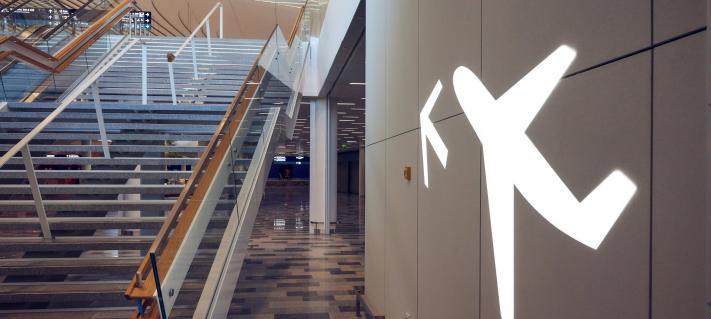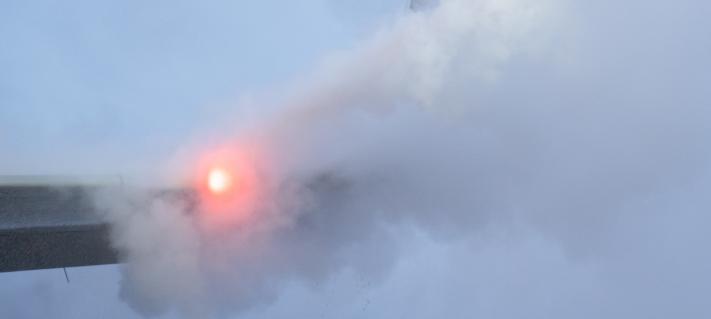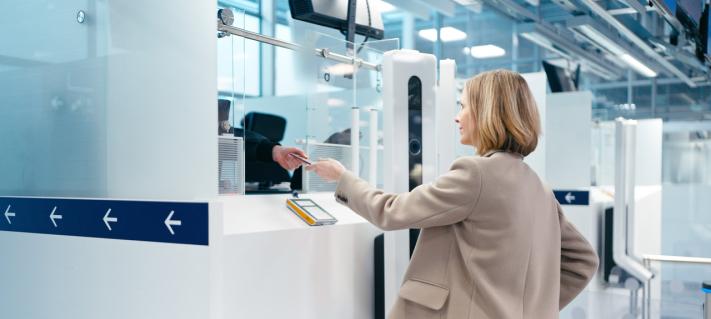Harmonious, aggressive, lively, agile. Wines are described with a variety of terms, but those served on airplanes must have one thing in common: strong flavor. In high altitudes, many flavors seem flatter, so the choice of wine must go a tad “over the top.
“Timid-tasting wines do not make it on our list. We tend to choose reds with higher tannic acids and acidic whites for our in-flight menus. Turbulence can lessen the bubbliness in wines, so sparkling wine and champagne should be especially fizzy,” says Sari-Anna Mäki-Koivisto, who is in charge of in-flight sales and drinks on Finnair flights.
"Turbulence can lessen the bubbliness in wines, so sparkling wine and champagne should be especially fizzy."
The reason for our diminished sense of taste on an airplane is the lower air pressure. The dryness of the air in the cabin especially affects passengers’ ability to sense the nuances of taste and smell in wines. In addition, stress, noise, bumpiness and jet lag can have an effect. The longer the flight, the stronger the effects. In reality, the wine’s actual taste does not change, just our ability to sense it. The same goes for food.
”I myself have noticed that even though I usually eat very healthy, I tend to choose saltier and sweeter products and fizzier drinks when I’m flying,” Mäki-Koivisto says.
Wine tastings take place on the ground
Though the taste of wines may be diminished over 15% in the air, in-flight wines are usually chosen in tastings held on ground level. The reason is purely logistical.
“It would be rather difficult to host an in-flight wine tasting. First, you’d have to empty out the products that are normally served and replace them with the tasting wines. And you’d have to fly out the tasters, which would take up seats on our flights that are often fully booked. We try to find ways to work around this issue.”
At the moment, Finnair wines are chosen by a jury of ten to 20 people.
At the moment, Finnair wines are chosen by a jury of ten to 20 people who attend a wine tasting held in Finnair premises. These connoisseurs can, through extended experience, judge which wines will work on in-flight menus. Wines served in Finnair lounges are chosen in the same tasting.
The most important factor is, of course, that the wines complement the in-flight meals. As the tasting is held usually once per year, in November, the food menus for the coming year may not yet be finished, but the jury will already know what the main ingredients in the dishes are. Wines must be chosen early on, as importing them – often from the other side of the world – can take months.
“It’s always thrilling to travel on a flight after the new wine list has been introduced and taste the wines on the plane in the right environment with the foods. I try to book a flight as quickly as possible after the new wine list has been launched,” says Mäki-Koivisto.
Singer Sting has his own in-flight wine
Several choices of reds and whites are offered on Finnair flights. They vary in character as well as in country of origin to offer more choice. For instance, Northern Europeans tend to prefer different wines than Asian travellers.
“Asians usually prefer sweeter dessert wines, and may drink them already with the main course. For some passengers Bordeaux equals red wine, so we try to keep one Bordeaux red on the list. In general, we’ve had especially good feedback about our wines,” Mäki-Koivisto says.
At the moment, business class serves a red wine produced on the vineyard of singer-songwriter Sting.
In Finnair business class and lounges, the wine list usually changes twice a year. At the moment, business class serves a red wine produced on the vineyard of singer-songwriter Sting. Mäki-Koivisto, who has in fact visited Sting’s vineyard in Tuscany, says the Sangiovese-based wine is a good choice to enjoy on a plane and on the ground.
“It’s a highly approachable wine, easy to enjoy with the light tannic acids taking an even milder character in higher altitudes. I’d say Sting’s wine is a good choice, and it’s garnered a lot of attention on our flights.”



